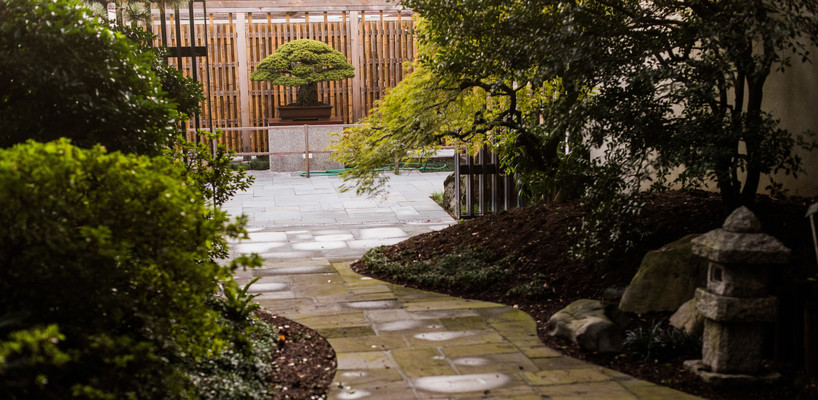
National Bonsai & Penjing Museum
The National Bonsai and Penjing Museum contains miniature masterpieces of horticultural art. The Chinese art of penjing and the Japanese art of bonsai use woody plants in containers as a medium to portray the natural growth habit of trees in the landscape. The living sculptures of bonsai and penjing are inspired by natural scenes, and they change with the seasons like their wild relatives. They require continual care and training to maintain their artistic designs. In addition to water and fertilization, the bonsai are pruned and their branches are shaped using wire to give the impression of ancient trees.
The museum’s collection began in 1976 with a gift of 53 bonsai trees from Japan to commemorate the United States Bicentennial. The collection has grown steadily with the addition of pieces from North American bonsai masters and a penjing collection from China. Now, more than 300 specimens rotate through the display tables and pedestals of three pavilions and a special exhibits gallery.
The bonsai intermix with companion art forms of viewing stones, herbaceous companion plants (kusamono), and Japanese flower arrangements (ikebana). The museum’s gardens are more than a beautiful backdrop to the bonsai; they are designed to prime the viewer for a calming experience surrounded by the finest selections of flowers and foliage. Visit often to see the bonsai and gardens change through the seasons.
TIPS FOR VISITORS
The museum’s hours are shorter than those of the arboretum: It is open from 10:00 am to 4:00 pm. The museum is closed for federal holidays during the months of November through February.